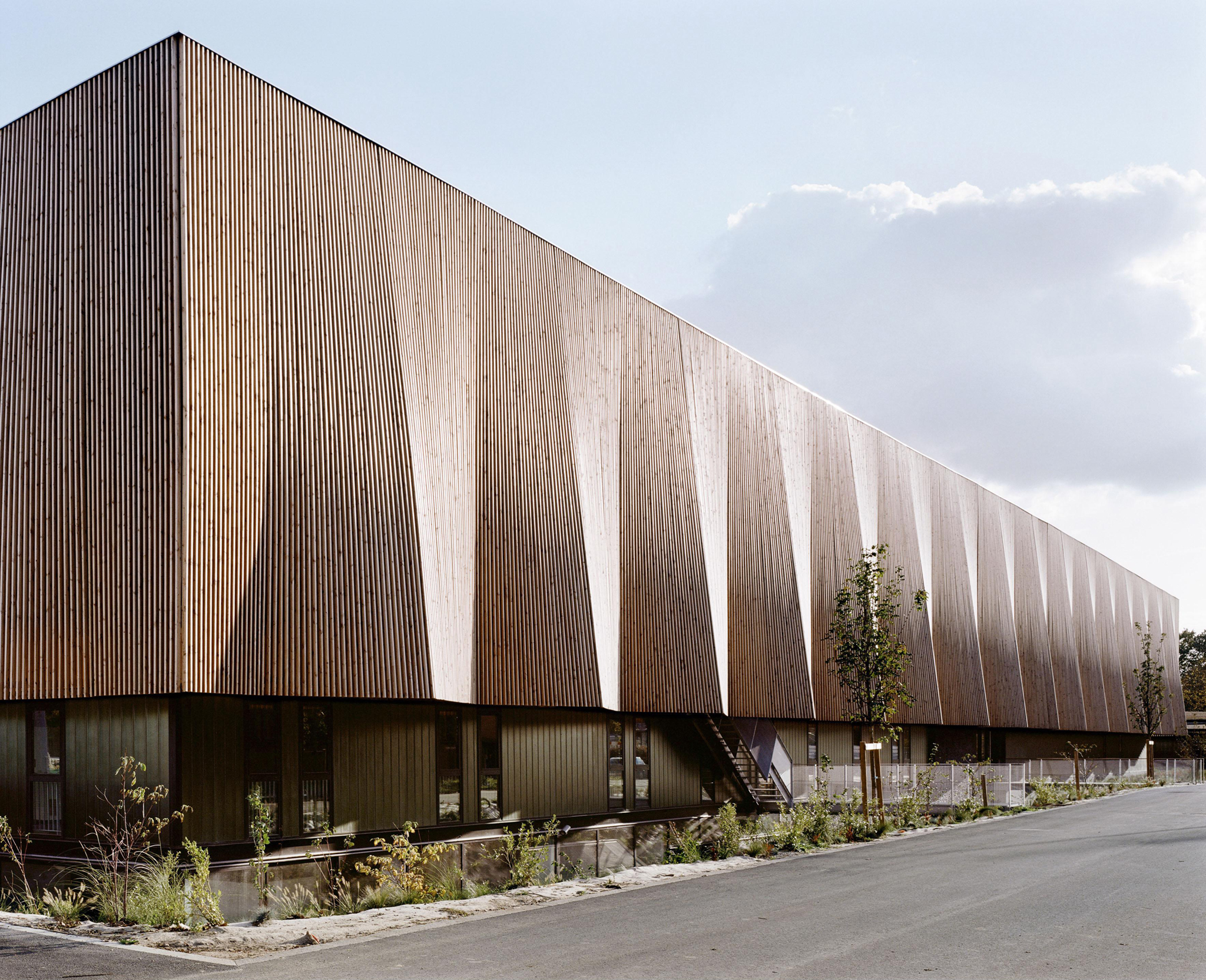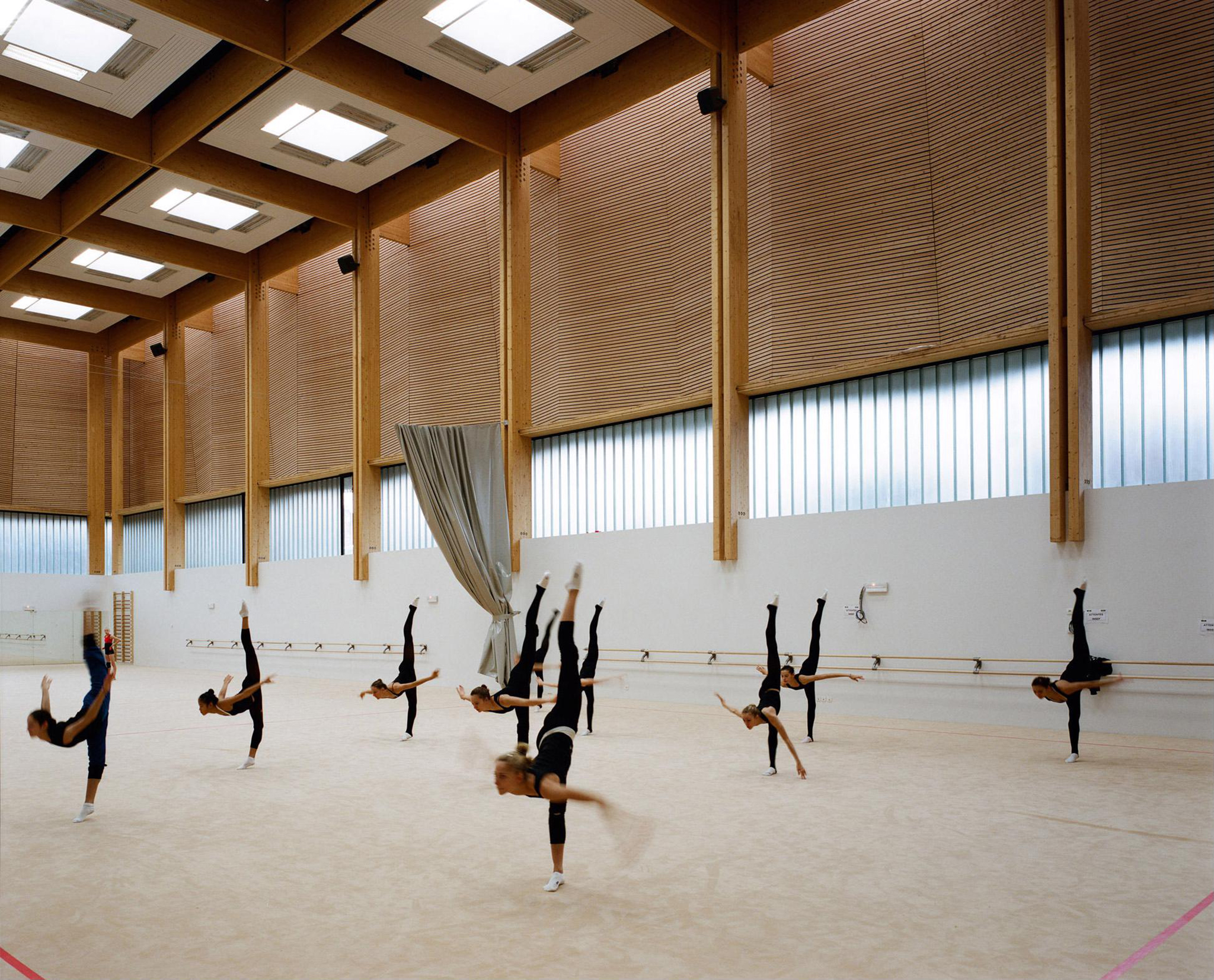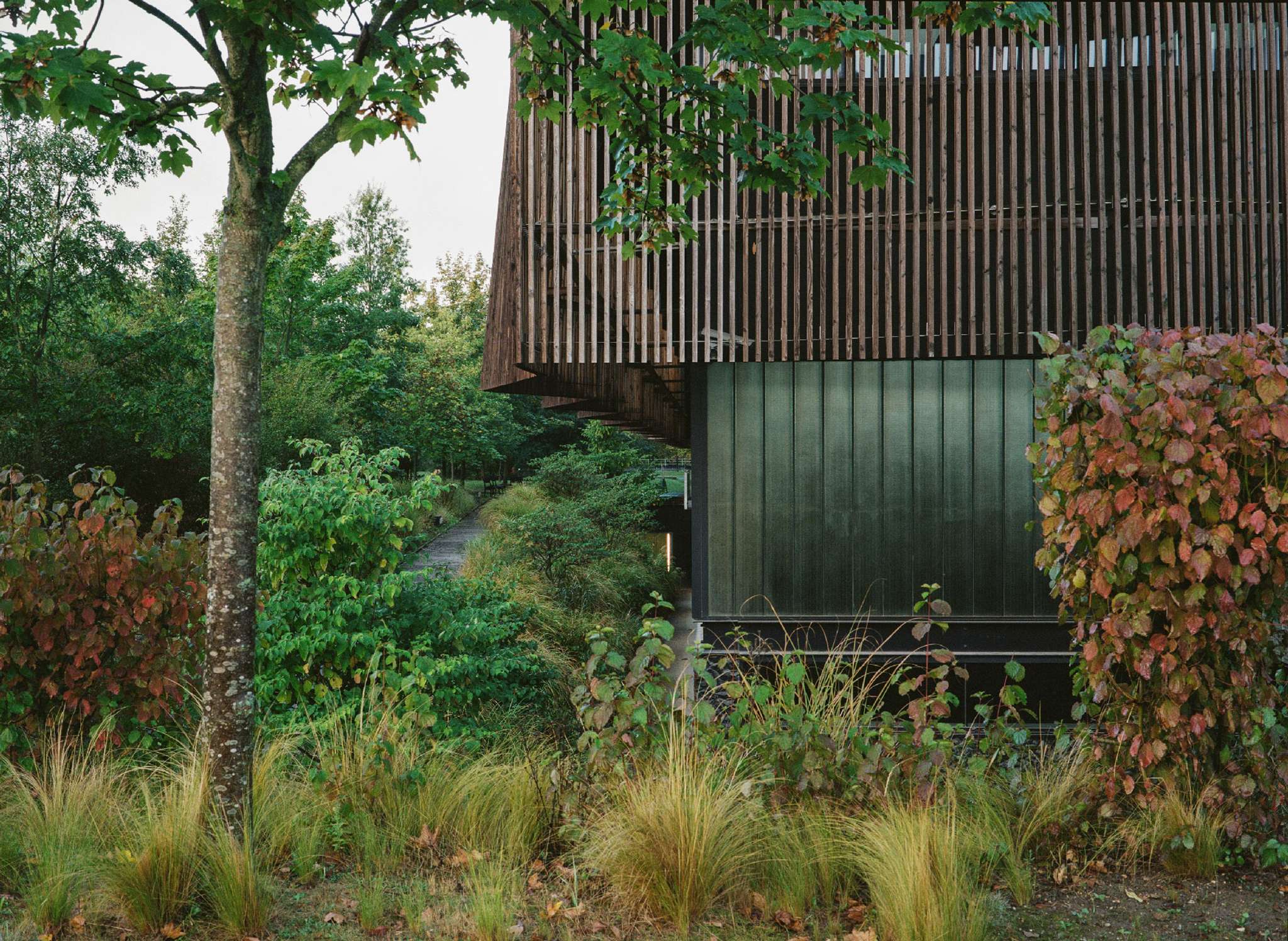Leclercq Associés designed a roof consisting of structural wooden cavities in a 6×6m, equipped with lighting and climate control. The center of each of these cavities is occupied by a roof window from which the lights are inserted, while the radiant panels are used for the heating system.
On the facades, a wooden pleat houses the emergency stairs and allows the sports center to maintain its own privacy. This outer skin contains the light attenuation systems and its thickness integrates the other technical limitations, such as acoustics. The wooden 'double skin' interior stairs free up large volumes for the gyms and offer views of the sports areas.
 Sport Center Paris by Leclercq Associés architecture. Photograph by Cyrille Weiner, Pascal Aimar.
Sport Center Paris by Leclercq Associés architecture. Photograph by Cyrille Weiner, Pascal Aimar.
 Sport Center Paris by Leclercq Associés architecture. Photograph by Cyrille Weiner, Pascal Aimar.
Sport Center Paris by Leclercq Associés architecture. Photograph by Cyrille Weiner, Pascal Aimar.
 Sport Center Paris by Leclercq Associés architecture. Photograph by Cyrille Weiner, Pascal Aimar.
Sport Center Paris by Leclercq Associés architecture. Photograph by Cyrille Weiner, Pascal Aimar.
On the facades, a wooden pleat houses the emergency stairs and allows the sports center to maintain its own privacy. This outer skin contains the light attenuation systems and its thickness integrates the other technical limitations, such as acoustics. The wooden 'double skin' interior stairs free up large volumes for the gyms and offer views of the sports areas.
 Sport Center Paris by Leclercq Associés architecture. Photograph by Cyrille Weiner, Pascal Aimar.
Sport Center Paris by Leclercq Associés architecture. Photograph by Cyrille Weiner, Pascal Aimar. Sport Center Paris by Leclercq Associés architecture. Photograph by Cyrille Weiner, Pascal Aimar.
Sport Center Paris by Leclercq Associés architecture. Photograph by Cyrille Weiner, Pascal Aimar. Sport Center Paris by Leclercq Associés architecture. Photograph by Cyrille Weiner, Pascal Aimar.
Sport Center Paris by Leclercq Associés architecture. Photograph by Cyrille Weiner, Pascal Aimar.
Description of project by Leclercq Associés architecture
Inside the Bois de Vincennes, the Sports Center complies with a logic of compactness: the different disciplines (gymnastics, fencing, wrestling, taekwondo, fitness, spa) are federated by a common roof and facade which evenly wrap up the training halls, common spaces and an indoor connecting street.
The hall ceiling consists of wooden structural cavities on a 6×6m, fitted with lighting and climate control. The outside skin is a wood pleat lifted in its lower part to accommodate the emergency stairs. This skin contains the light-dimming systems and its thickness integrates the other technical constrains such as acoustics.



















































